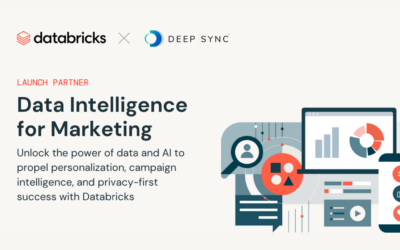Digital marketing is an integral part of your nonprofit’s operations, as brand awareness and engagement help to further your mission. However, due to the rise of technology, people are inundated with digital advertisements—from emails from their favorite clothing store to Google ads from local restaurants.
If you want to stand out from the competition and attract new supporters to your nonprofit, you need a strong digital marketing strategy. In this guide, we’ll show you how to make your mark on the digital marketing landscape by:
- Setting yourself apart with eCards.
- Leveraging the power of social media.
- Melding data with anecdotes for stellar storytelling.
Before you make changes to your digital marketing strategy, consider the data you’ve collected on its efficacy. Examine conversion rates and consider how you can improve upon these metrics. By carefully evaluating your data, you can make informed decisions that lead to greater marketing and fundraising success.
1. Set yourself apart with eCards.
eCards are digital greeting cards that are sent via email to your nonprofit’s mailing list. They are extremely versatile and can be used in a variety of common situations for nonprofits.
Some of the ways your nonprofit can implement eCards into your digital marketing strategy include:
- Event invitations: Whether you’re inviting supporters to a fundraising gala or a supporter appreciation happy hour event, you can create an eCard invitation to fit the event.
- Volunteer opportunities: When positions for volunteers open up at your nonprofit, you can send eCards to your supporters asking them to lend their time and effort to a cause they support.
- Thank-you messages: Send eCards to thank donors who have just made a gift, volunteers who made an event possible, or even new supporters who’ve just joined your mailing list.
- Well wishes for special occasions: To show supporters that you care about them, consider sending eCards wishing them well for holidays and birthdays. For example, eCardWidget recommends that you embody the holiday spirit with Christmas eCards.
Aside from their versatility, there are many other benefits to using eCards as a part of your nonprofit’s marketing strategy, as they are:
- Cost-effective: Unlike sending supporters physical greeting cards, you won’t need to worry about printing or mailing costs.
- Customizable: You can choose what image goes on the eCard, whether you want text on that image or not, what that text says, and what font it will be in.
- Personalizable: Much like physical greeting cards, your nonprofit can include a longer message inside the eCard to accompany the eye-catching graphic. You can apply personalization best practices to this message, such as addressing it to the recipient’s preferred name.
- Creative and unique: eCards are an opportunity to show off your creativity and set yourself apart from other nonprofits with a fun and unique image. Some eCard software solutions even allow you to add animations to the image to help further engage viewers.
To make your eCards stand out, keep graphic design principles in mind and consider working with a dedicated graphic designer. They will use their experience and professional touch to ensure that your nonprofit’s branding, including colors and logo, is properly incorporated and that the images are eye-catching.
2. Leverage the power of social media.
Social media platforms have become one of the greatest tools for reaching a larger and wider audience, due to their popularity. They connect you with individuals who might otherwise not have discovered your nonprofit, and they also provide you with:
- Social proof: Most social media platforms allow users to “like” and “share” posts that your nonprofit creates. When people do this, it essentially proves to potential supporters that your nonprofit is worthy of their assistance.
- Stay top-of-mind: Regularly post content to your social media pages to keep your nonprofit at the forefront of your supporters’ minds.
- Stronger connections: Aside from creating content for supporters to view, you can also respond to comments and host live streams on social media, leading to stronger connections with supporters.
- Analytics: Many social media platforms offer analytics that you can use. Examine this data to help you create content that your supporters will enjoy, resulting in a more loyal supporter base.
Encourage supporters to share information about your nonprofit and your operations on their pages. Your most loyal supporters will be happy to help your nonprofit in this small way, and it can lead to an even greater impact on your nonprofit.
Strategically determine which social media platforms to conduct your digital marketing on, such as:
- Facebook: With almost 3 billion users, Facebook is an extremely popular social media platform. It even helps nonprofits fundraise directly on the platform by allowing supporters to create birthday fundraisers on behalf of the nonprofit.
- Twitter: Best for short-form digital marketing messages, Twitter is another great platform for your nonprofit to spread relevant news.
- Instagram: Instagram posts are image-based rather than text-based, making this platform an excellent choice for nonprofits with eye-catching photos of their beneficiaries, volunteers, and other supporters.
- LinkedIn: Since LinkedIn’s main audience consists of professionals, advice and commentary about the nonprofit sector that demonstrates your knowledge can help you position your nonprofit as an authority in the industry.
- TikTok: This platform allows you to get creative, as it functions entirely on viral video content.
Keep in mind that each social media platform has its own audience. If you’re looking to connect with younger supporters, such as those from Gen Z, TikTok is the ideal choice for your nonprofit. On the other hand, Facebook and LinkedIn are home to older audiences.
To ensure you’re targeting the right audience on the right platform, conduct a social media append. A social media append involves adding data about individuals’ social media use and activity to your database. This can help you better understand your audience’s interests and preferences, and decide which social media channels to focus on for your campaigns.
3. Combine data with anecdotes for stellar storytelling.
Storytelling is an important digital marketing strategy as it helps organizations build a connection with their audience and communicate their mission in a memorable and impactful way. This can lead to increased engagement, support, and ultimately, a greater impact on the cause the nonprofit is working towards.
For stellar storytelling, leverage data. Incorporating data into your digital stories adds credibility and transparency to your impact and helps build trust with stakeholders. It also allows you to measure and communicate your progress toward your mission and goals more effectively.
Be specific with both your data. For example:
- If your nonprofit is an animal shelter, post an Instagram story showing an influx of new puppies and describing how charitable contributions allowed you to feed and rehome twenty of them.
- If your nonprofit is a food kitchen, send an email informing supporters about a specific beneficiary that comes every weekend, and then demonstrate greater impact by saying that with your supporters’ aid, you serve over 300 meals every weekend.
- If your nonprofit provides education to children, write a blog post about a specific child who has entered your program and now has high grades, and explain that you’ve successfully enrolled twenty students this year due to your supporters’ help.
To ensure that you have the appropriate data for your impact reports and digital marketing messages, you’ll want to implement data best practices for your nonprofit. This includes maintaining data hygiene, which ensures your data is error-free so you can easily access and find the relevant data that you need.
Standing out from the mass of digital marketing messages can be difficult, but with these three unique strategies, you’ll be able to do that while further engaging your supporters.
Whether you’re determining which supporters to send eCards to or which social media platforms to use, remember to properly manage your data. Doing so will help you gain a competitive advantage, build stronger relationships with your audience, and achieve your goals more effectively in today’s digital landscape.












0 Comments